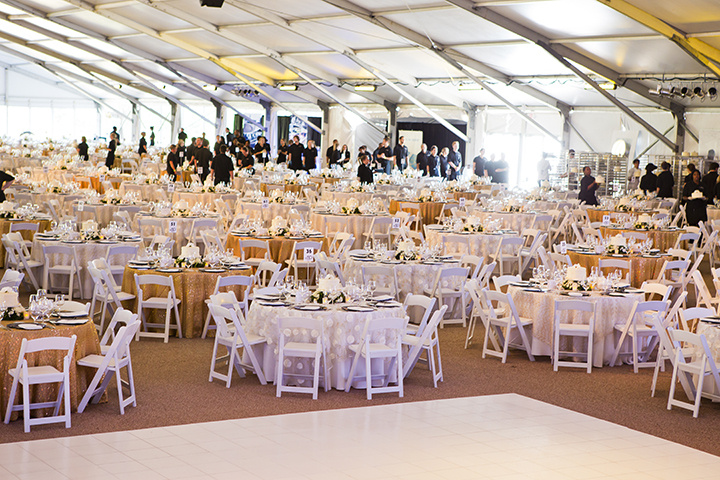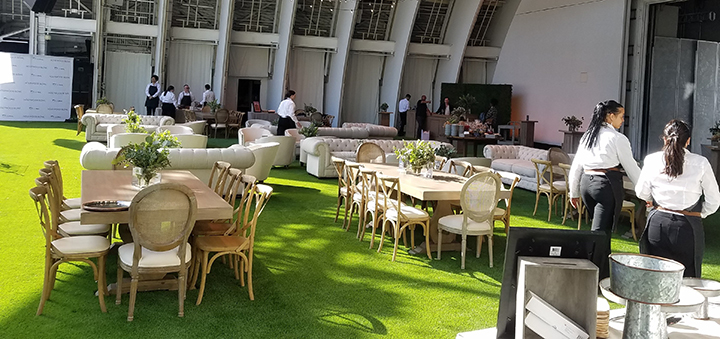I sometimes get surprised reactions from my brides, grooms, and other clients when I ask them “Do you want everyone to have a seat?” On the surface, it may seem like an odd question to ask, especially early on in the planning process, but the seating—or lack thereof—at any event, dictates more for our clients to consider. Menus, ceremonies, venues, and décor have in many cases veered away from what was “traditional.” Approaches to floor plans and seating are a big part of this change.

This large, more traditional and formal event for over 2000 people executed by Event Source required that all guests have a seat. Photo 2016 © KATHRYN D STUDIOS
Having 100% seating, along with seating and/or table assignments, lends a more formal, traditional air to an event. When couples or clients describe themselves as “casual” or “non-traditional,” it’s a perfect opening to suggest some alternatives to them. Unless you are executing a plated, sit-down meal, do your guests all really need to sit in an assigned location? Partial seating encourages your guests to mingle, and immediately gives the event a lighter, more casual tone without saying a word.

Mixing lounge furniture with traditional seating instantly creates a more casual vibe. Photo courtesy Sodexo at the Hollywood Bowl
When and if you are planning an event with only partial seating, some items to consider are:
---
“If you are only offering partial seating, consider performance stations, tapas style serving, or even heavy hors d’oeuvre menus that keep the casual vibe going.”
---
• The expected attendees at the event. Do the attendees include several older or non-mobile guests that truly require seats? It doesn’t mean you can’t still accommodate these guests, either by reserving a table or two for them, or adding additional chairs. Weddings, for example, are usually a mix of several different age groups; look at the guest list and see how many invitees will need a chair.
• Menus need to work with the seating you select. If you are only offering partial seating, consider performance stations, tapas style serving, or even heavy hors d’oeuvre menus that keep the casual vibe going. Menu items that are “fork-friendly” and served on smaller plates or in smaller vessels are much easier for guests to handle.
• Soft vs. hard seating options. This is a terrific opportunity to include lounge furniture, vintage settees, or other unexpected furniture into the mix. Mixing some traditional Chiavari chairs with benches, barstools, or even sofas add visual interest and provide options for your guests.
As with any part of the planning process, guiding your clients and managing their expectations as to different seating options may take some convincing—be prepared with floor plans, photos, menus, and success stories that prove your point. With free floor plan programs now available, there are no excuses when it comes to showing your clients many different options.
Doug Quattrini, CPCE is the NACE (National Association for Catering & Events) National Secretary and is with Feastivities Events





